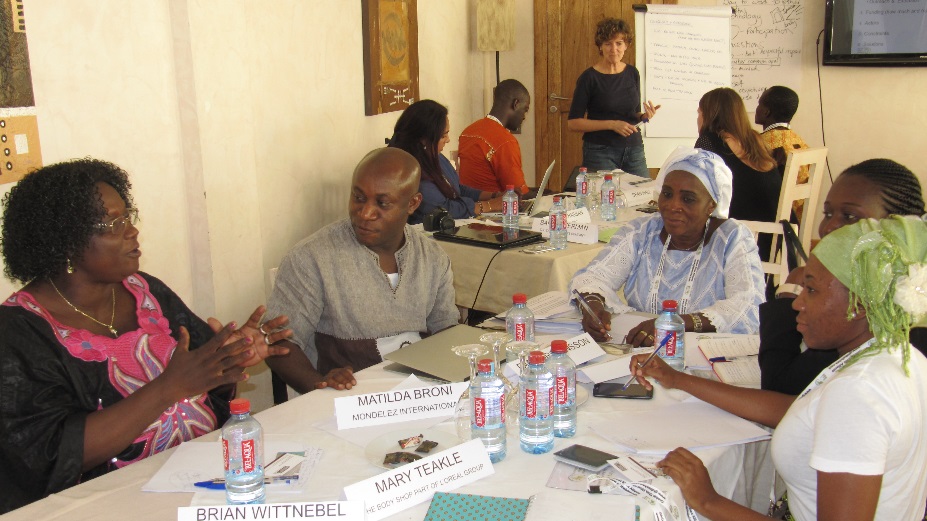
One of the good things about our work is that it often reveals and deals directly with complex trading relationships involving goods that travel the world, maybe going through a range of ports, processes, intermediaries and agents before finally ending up on and in our bodies. I can count on wearing cotton, drinking tea and eating chocolate pretty much every day of my adult life so it’s rewarding to work through these various links to the people who actually produce these goods, and hopefully doing our bit to foster good conditions and a fair return down the value chain.
Shea butter: eaten as well as applied
In 2013, Ergon was invited to start work with the Global Shea Alliance (GSA) on a product we were not very familiar with, but which I had nevertheless been putting on my skin and, apparently, eating: shea butter. You might know it from African markets or from pots of body butter. What is less known is that 90% of the world’s shea butter goes into food as a vegetable fat, with the rest being used in cosmetics and the pharmaceutical industry – multiple uses that reflect its traditional role as an edible oil, skin emollient and for medicinal/cultural uses in the countries where it grows.
The labour behind the label
Julius Yeboah, from the Ghana Cocoa Research Institute, demonstrating shea grafting which speeds growth and improves yield
Shea butter is derived from shea nuts, a ‘wild’ crop (though sometimes from managed shea parklands) collected, usually by women, in the Sahel regions of sub-Saharan Africa. Like many other industries, shea butter has a complex supply chain – traded as both nuts and butter, some handcrafted, some through industrial processes, some produced locally, much exported. And demand is growing dramatically – the butter is used as a cocoa butter equivalent so is used in confectionary in some countries. And like other agricultural commodities, shea now has its own multi-stakeholder alliance in the GSA, bringing together shea industry players and intended to make the industry more competitive, sustainable and profitable for those who derive income from it – particularly the women of the Sahel belt, who GSA estimate derive an average of 15% of their household income from it.
For Ergon, working with GSA Sustainability Working Group to help develop their sustainability guidelines and programme (from their own original key themes), and observing the twin tracks of environmental and social sustainability developing has been fascinating. It has been an exemplar of the hard work, tentative progress and careful dance that goes into agreeing guidance and standards in lots of industries – especially those with certification labels (which GSA is not). It’s been particularly fascinating playing a part in bringing and keeping together players who are competitors (and in this industry that can mean many invisible traders – large and small – with little historical experience of pre-competitive joint work) with different trading and processing models. The common aim of all the members is that the women who do the work of collecting the nuts, and in some cases processing them, can derive greater benefits from their work, as well as generating collective action to ensure environmental improvements in shea management and butter production.
Skin and hearts aglow
Certainly, it’s been no easy task drafting an approach comprehensible to very different types of stakeholder, designing meetings to build trust, cooperation and productivity, learning from mistakes and bringing data together about an industry which was previously quite fragmented and where collection and part of production are concentrated in very rural areas.

Nevertheless, as I reflect on my return from my third GSA Sustainability Working Group facilitation visit in Ghana, the job satisfaction has been very high – with a spirit of creativity and cooperation, lots of energetic women (and men) from the top to the bottom of the supply chain, fab West African outfits, making shea butter with my own hands. Hopefully our work will help lead to higher prices for producers, reduced snakebites, improved sustainability for eco-systems and continued opportunity for the whole industry. And that’s the kind of result that will definitely make my skin glow.